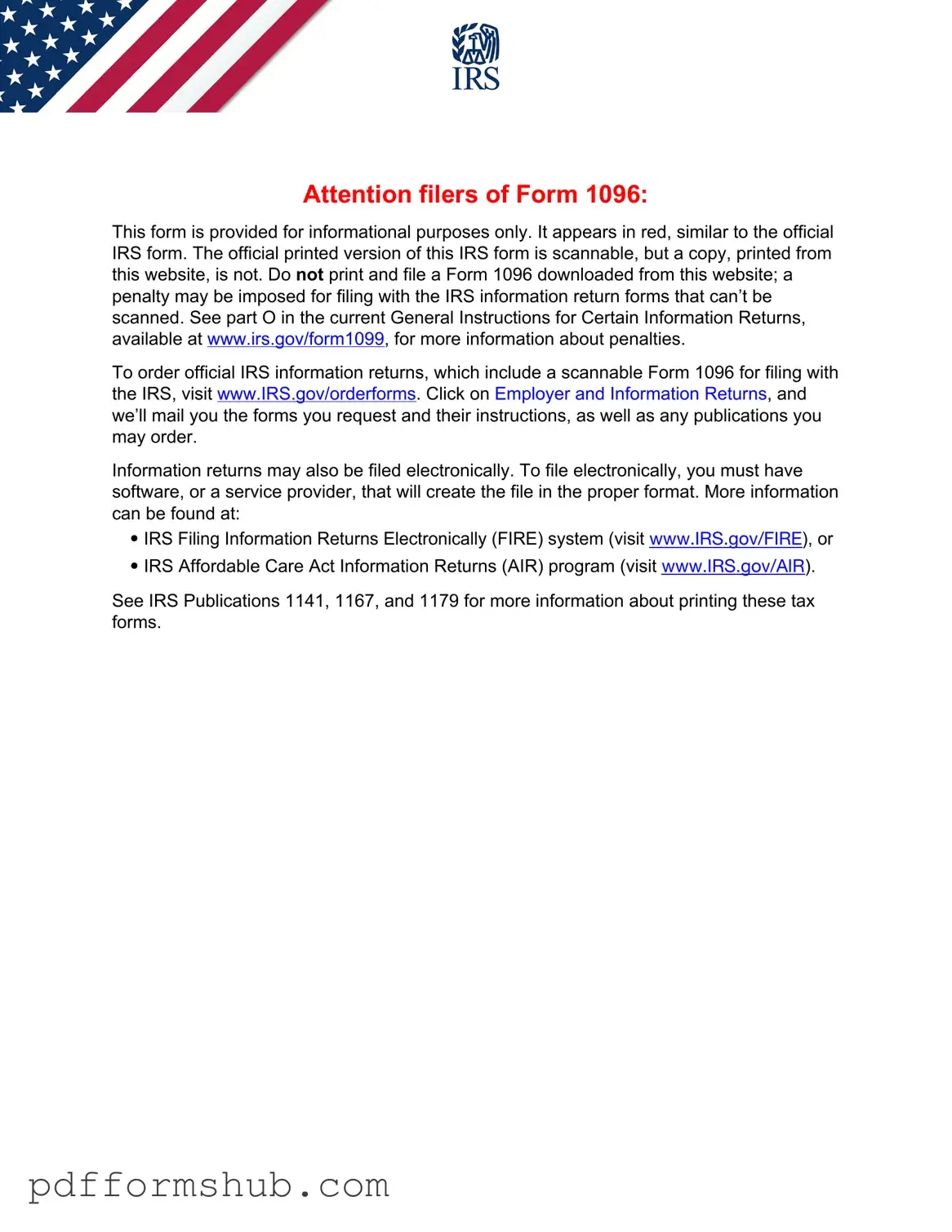Fill in Your IRS 1096 Form
The IRS 1096 form is a summary of information returns that must be submitted to the Internal Revenue Service when filing certain types of forms, such as 1099s. This form serves as a cover sheet, providing essential details about the information returns being filed. Understanding how to complete the 1096 form accurately is crucial for compliance and avoiding potential penalties.
Ready to fill out the IRS 1096 form? Click the button below to get started!
Customize Form
